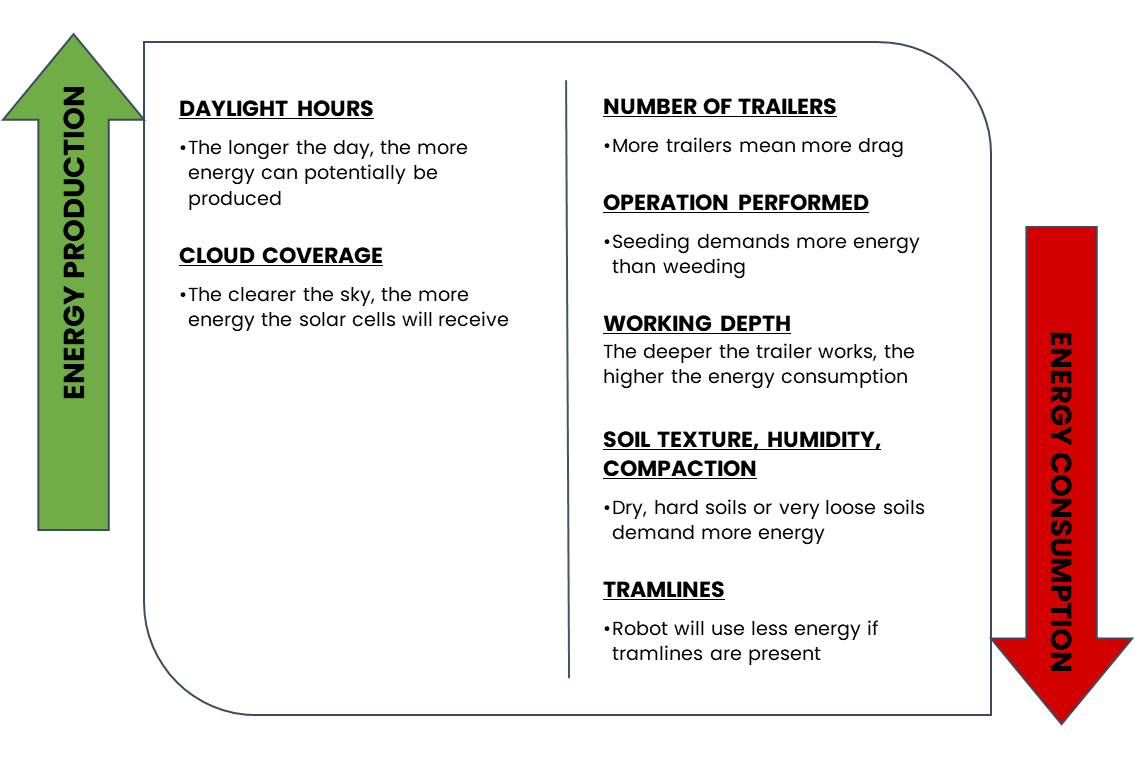Expected runtime
The runtime of the FD20 is based on the energy production from the solar panels and consumption of the robot while performing operations in the field.
These two factors are influenced by several operative and environmental conditions, which are summarized in the following chart:

Below are some general guidelines as to expected operating hours of the robot. However, actual runtime will vary based on local conditions, such as different kinds of soils, as well as individual days with varying degrees of effective sun hours.
|
Europe |
Wh production |
Runtime - Hours @ 600w |
Runtime - Hours @ 500w |
Runtime - Hours @ 375w |
||||
|
Best |
Avg. |
Best |
Avg. |
Best |
Avg. |
Best |
Avg. |
|
|
Medio March |
8000-9000 |
4000-5000 |
13-14 |
6-8 |
16-18 |
8-10 |
21-24 |
11-13 |
|
Medio April |
12000-13500 |
7000-8000 |
19-22 |
11-13 |
>24 |
14-16 |
>24 |
19-21 |
|
Medio May |
14500-15000 |
App. 9000 |
23-24 |
App. 14 |
>24 |
App. 18 |
>24 |
>24 |
The power production of the Solar Panels can be monitored by logging on to the charge controllers using an App for smart phones (Link: Monitor the status of solar panels and batteries). The approximate uptime of the FD20 can thereby be found by comparing the chart above to actual current status of the robot, alongside the real-time power production of the solar panels.
As an indicative example of the power consumption for the different operations:
- Seeding, driving tracks not made in advance, consumption app. 500 to 600w
- Blind weeding in existing tracks, app. 375 to 500w
- In-Row weeding in existing tracks, 375 to 600w
Please note that the actual runtime is sensitive to multiple variables, thus the operational time will vary. Therefore, above should be perceived as guidelines.
TIPS AND TRICKS 😉👍
To improve the autonomous driving of your FD20, make sure to:
- Let the robot run on the field once, before seeding. This would allow the droid to form tramlines and increase its autonomy, when performing the actual seeding
- Remove the passive trailers when seeding, to decrease the carried weight and to increase the energy efficiency
- Check the tires pressure to ensure a good grip for the back wheels
- Check the working depth of the trailers, to avoid unnecessary drag
- Clean the solar panel to boost the charging capacity of the droid

